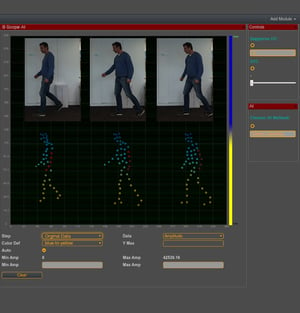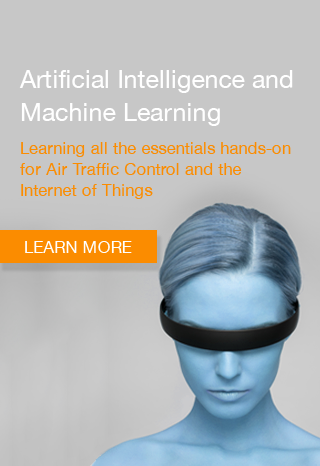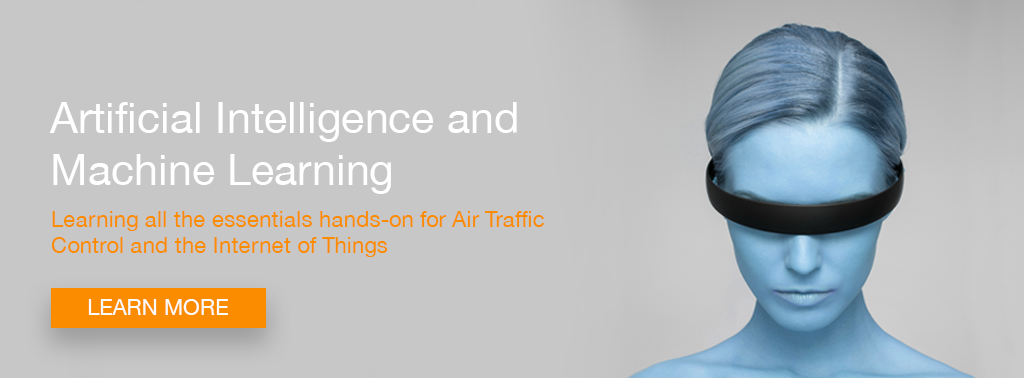Deep Learning Algorithms produce better-than-human results in image recognition, generating a close to zero fault rate [1]. This article shows how this works in radar technology and explains, how Artificial Intelligence can be taught in University Education and NextGen ATC qualification.
What is Deep Learning
Deep learning is a machine learning method based on artificial neural networks. It uses multiple layers to progressively extract higher level features from the raw input.
For example, in radar data processing, lower layers may identify reflecting points, while higher layers may derive aircraft types based on cross sections.
Or even a malicious intent, based on the pattern of group behavior or planes.
An alarm situation could be derived from navigational patterns of an aircraft (rapid sinking, curvy trajectory, unexplained deviation from the prescribed trajectory etc.), indicating a technical or human-caused emergency.
Better-than-Human Image Recognition Rate
Branka Jokanovic and her team made an experiment using radar to detect the falling of elderly people [2]. The "trained" radar was able to differentiate between four human motions (walking, falling, bending/straightening, sitting). The results of her experiments demonstrated the superiority of the deep learning approach over any conventional
method for in discriminating between the different considered human motions [2].
Non-Image-like Data Processing
 A couple of days ago, I discussed with my Singapourien colleague Albert Cheng about the limits of AI in radar, if there are any. Albert described the disruptive impact which cognitive radio has on telecommunication.
A couple of days ago, I discussed with my Singapourien colleague Albert Cheng about the limits of AI in radar, if there are any. Albert described the disruptive impact which cognitive radio has on telecommunication.
Similar to cognitive radio networking and communication, AI can play the role of cognitive decision maker, for example in cognitive radar antenna selection:
- deploying a full array and
- then selecting an optimal sub-array to "transmit and receive the signals in response to changes in the target environment" [3].
Another example is the segmentation of radar point clouds [4] through deep learning algorithms.
Innovating the Radar Signal Processing Chain
Most inspiring is the work by Daniel Brodeski and his colleagues [5]. The team uses IQ data for detection and localization of objects in the 4D space (range, Doppler, azimuth, elevation). Already today, the approach outperforms traditional radars. Such a deep-learning based process may lead to nothing less than the replacement of the classical radar signal processing chain. Apart from the initial system training process, it turns many of the cost drivers and time burners obsolete such as the radar calibration process.
Radar Data Preparation
The quality of the artificially intelligent system relies on the quality of the available labelled dataset. Labeled data is a group of samples that have been tagged with one or more labels. In the radar case it could be either synthetically generated data (relying on the quality of the sensor model), or radar calibration data, generated in an anechoic chamber on known targets with a set of known sensors.
Radar Model Development
The creation of the machine learning model can be segmented into three main phases:
 Model initiation where the user defines the problem, prepares and processes the chosen data set and chooses the applicable machine learning algorithm
Model initiation where the user defines the problem, prepares and processes the chosen data set and chooses the applicable machine learning algorithm- Performance estimation where various parameter combinations that describe the algorithm are validated and the best performing one is chosen
- Deployment of model to begin solving the task on the unseen data
Brodeski and his team stage the object detection process into 4 steps:
- first deploying a Region Proposal Network (RPN), sharing full-image features with the detection network and
- subsequently using a classifier for classifying and fine-tuning the locations.
- then detecting, classifying and localizing all reflections in the
range-Doppler domain - and lastly finding azimuth and elevation angles of each data point found in the previous step.
Implications for University Students and for ATC Trainees
Many people are afraid of AI, or consider it a threat. We see it as a huge opportunity. Our objective is to enable our users to use AI as a tool to generate better, faster, safer and more economical results.
SkyRadar offers to use our systems to learn
- data preparation,
- model building,
- choice of algorithm and
- system optimization.
Understanding AI means understanding the whole processes. This is why our approach is to make students work through the process from A to Z.
SkyRadar's systems make it easy to organically grow into the new technology.
As a university or aviation academy, you will get all you need to set up your learning environment including teach-the-teacher support. The systems are designed in such a way, that universities and research bodies can use the environment to develop further solutions and to exchange and discuss them with our ecosystem of users and experts.
References
- Read more articles on Artificial Intelligence in Radar Technology (2019 - today), by Dawn Turner, Martin Rupp and Ulrich Scholten
- Machine Learning in Artificial Intelligence: Towards a Common Understanding
(8 January 2019), by Niklas Kühl, Marc Goutier, Robin Hirt, Gerhard Satzger, first published at the Conference: Hawaii International Conference on System Sciences (HICSS-52) At: Grand Wailea, Maui, Hawaii - [1] Multi-Column Deep Neural Network for Traffic Sign Classification (2012), by Dan Ciresan, Ueli Meier, Jonathan Masci, Jürgen Schmidhuber
- [2] Radar Fall Motion Detection Using Deep Learning (2019), by Branka Jokanovic, Moeness Amin, and Fauzia Ahmad
- [3] Cognitive radar antenna selection via deep learning (2019), by Ahmet M. Elbir, Kumar Vijay Mishra and Yonina C. Eldar
- [4] Semantic Segmentation on Radar Point Clouds (2018), by Ole Schumann, Markus Hahn, Jürgen Dickmann and Christian Wöhler
- [5] Deep Radar Detector (2019), by Daniel Brodeski, Igal Bilik and Raja Giryes
- Convolutional Neural Network Architecture: Forging Pathways to the Future (retrieved December 2019)





